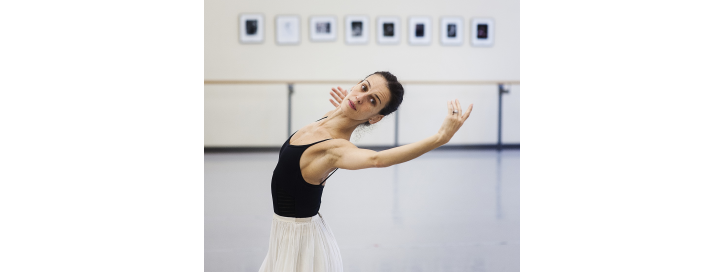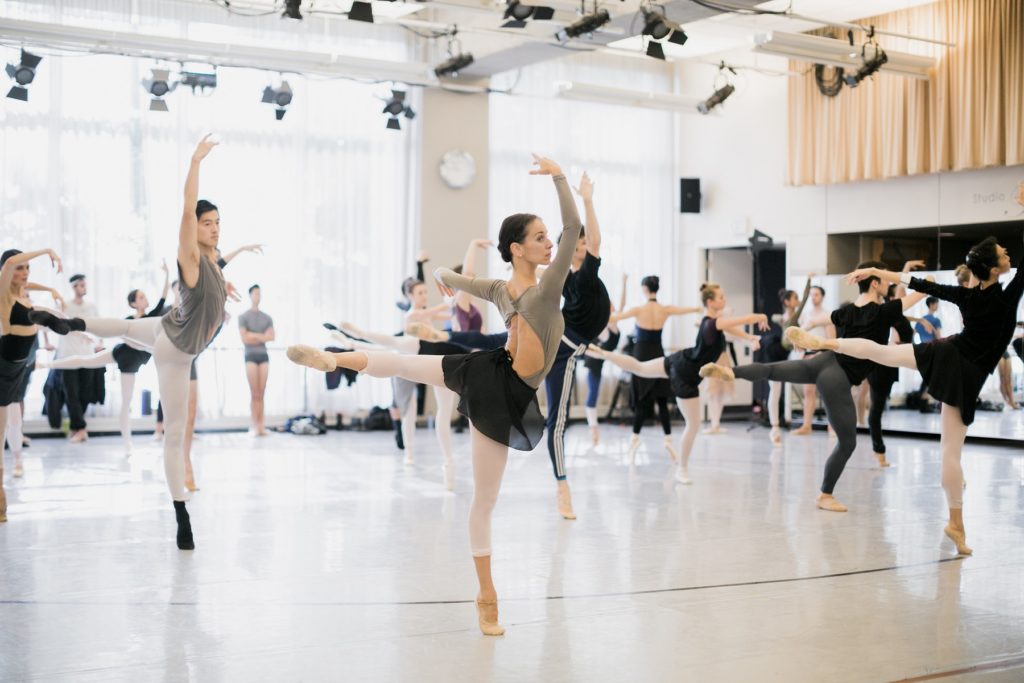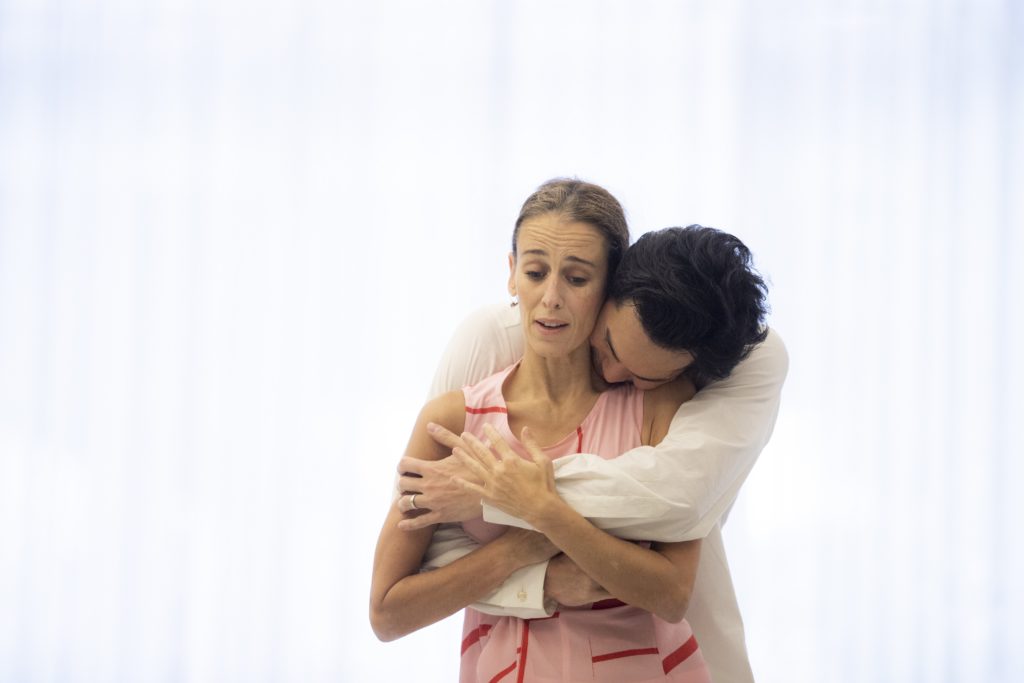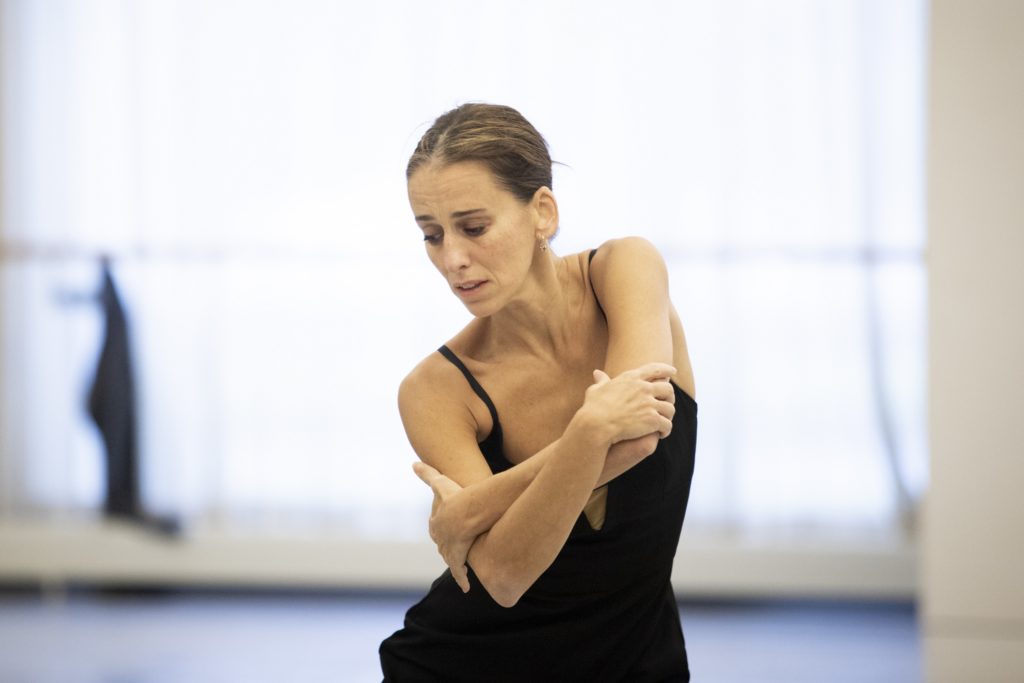Anna Karenina

Sonia Rodriguez-ph.Aaron Vincent Elkaim
Anna Karénine est un des chefs d’œuvre de Léon Tolstoï écrit en 1877. John Neumeier s’inspire de ce roman pour créer le ballet Anna Karenina, une coproduction entre le Ballet d’Hambourg dont il est directeur artistique, le Bolchoï et le Ballet National du Canada. John Neumeier, grand maître dans la création d’œuvres où l’analyse psychologique des personnages est rendue sur scène avec une grande sensibilité grâce à une profonde compréhension de l’être humain, livre ses propos :
« Je pense que le ballet offre d’importantes sources de réflexion et j’ai essayé d’adapter le roman à notre époque. J’ai développé le sujet autour de deux questions : qu’est-il possible de faire pour un homme et qu’est-il possible de faire pour une femme ? Anna Karenina ne nous mets pas seulement face au destin d’Anna mais raconte l’histoire complexe de trois familles bourgeoise de la Russie du XIX siècle. C’est l’aspect le plus intéressant et j’ai souhaité tracer un portrait des relations qui existent entre leurs membres. Je ne veux pas raconter seulement l’histoire d’amour entre Anna et Vronsky, les infidélités d’elle envers son mari. Je me suis concentré sur l’analyse des personnages les plus captivants, notamment sur les relations entre Dolly et Stiva, Kitty et Levin. En particulier, pour développer le personnage d’Anna, je crois qu’en tant que femme d’un diplomate et d’un célèbre politicien, elle a été courageuse de suivre ses aspirations. Elle fut un exemple pour d’autres femmes de son époque et elle peut l’être encore aujourd’hui. Son honnêteté est un des aspects les plus importants de sa personnalité. Comme Tolstoï créa son roman pour son époque, moi j’ai voulu créer un ballet pour mon temps ».
«I think that the themes of this ballet are relevant, and I have tried to adapt the novel to our time. I developed my ballet around these questions: what is possible to do for a man and what is possible to do for a woman. Anna Karenina is not only about of Anna but especially it speaks about the complex relationships of three family. And this is interesting. It is not just the love story between Anna and Vronsky; for this reason, I have tried not to do a soap opera about a woman who was unfaithful to her husband, but I would investigate the personality of the protagonists and their relations. The characters of Dolly and Steve and Stiva, Kitty and Levin are very interesting. What I wanted to create is a picture of this complex world of family life. As Tolstoy created the novel of his time, in his modern time, I created a ballet for my time. Developing Anna’s character, I think she was courageous as woman of a famous diplomate, politician. She feels the necessity to leave her own life, her husband, to follow his love. She was an exception to many other women of her society and she could be a symbol for us. Her honesty is a very important aspect of her character».
Du 10 au 18 novembre, pour l’ouverture de la saison 2018/19, le National Ballet of Canada présentera Anna Karenina au Four Seasons Centre for the Performing Arts à Toronto. Sonia Rodriguez, principal dancer du NBOC qui interprétera le rôle d’Anna, dévoile ses pensées sur ce rôle.
Anna Karenina opens the National Ballet’s 2018/19 season, November 10 – 18, 2018 at the Four Seasons Centre for the Performing Arts in Toronto. The principal dancer, Sonia Rodriguez, who will dance the title role, draws Anna’s portrait and answers to our questions about this ballet:
A.P.Quel type de langage chorégraphique John Neumeier a-t-il conçu pour le personnage d’Anna Karenina?
Which kind of choreographic language did John Neumeier adopt for the personage of Anna Karenina?
S.R. : Dans Anna Karenina, le personnage d’Anna passe par une découverte de soi, qu’il s’agisse d’essayer de se conformer à son rôle d’épouse et de mère parfaite dans un mariage qui ne satisfait pas ses désirs émotionnels, ou de défier les attentes de la société envers elle en tant que femme et d’essayer réellement de découvrir ses aspirations et sa vocation. La chorégraphie reflète tout cela par l’utilisation d’un vocabulaire qui évolue tout au long du ballet pour décrire ces différentes émotions. Au début, ses mouvements sont contrôlés et posés, c’est l’image qu’elle veut donner d’elle-même. La première fois que nous la voyons seule, le registre change car chaque pas qu’elle fait est légèrement déséquilibré, ce qui exprime ses luttes intérieures. Le langage évolue avec chaque scène et chaque étape est chorégraphiée avec une intention émotionnelle.
In Anna Karenina, the character of Anna goes through a self-discovery, from trying to conform to her role of perfect wife and mother in a marriage that does not satisfy her emotional needs, to challenging society’s expectations of her as a woman and truly trying to discover her needs and voice. The choreography reflects this by having a vocabulary that is very much evolving to reflect those emotions. At the beginning of the ballet, every step she is givenis very much controlled and posed, it is the view she wants to give to people of her life. The first time we see her alone, every step she takes is a bit off balance to reflect her inner struggles. With each scene and as she evolves so does her vocabulary, every step is choreographed with an emotional intent.
A.P. : Comment avez-vous travaillé pour incarner la personnalité d’Anna, une belle femme, une figure romantique, complexe sur le plan psychologique parce qu’elle est une femme passionnée, avec beaucoup de remords, victime des coutumes de son époque et de son amour pour Vronsky?
How did you work to embody Anna’s personality, a beautiful woman, a romantic figure, psychologically complex because she is a passionate woman, with a lot of remorse, victim of customs of her era and of her love for Vronsky?
S.R. : J’ai approché la personnalité d’Anna sans idées préconçues ni jugement. J’essaie simplement de comprendre ses situations, les choix qu’elle a fait et de l’accepter telle qu’elle est.
I approached her without any preconceived or judgment. I try to simply understand her situations, the choices she made and to accept her for who she is.
A.P. : Quels sont les aspects de sa personnalité qui vous ont le plus touché?
Which are the aspects of her personality which the most affected you?
S.R. : Sa détermination à vivre sa propre vie et à rechercher l’affirmation de soi.
Her determination to live life her own way and her search for self-definition.
A.P. : Quelle est la relation entre Anna et les deux autres personnages principaux du roman, le couple de Kitty et Levin?
How does Anna feel the relationship with the two others principal characters of the novel, the couple of Kitty and Levin?
S.R. : Les vies d’Anna et de Levin sont dans un certain sens opposées; au moment où Kitty rejette Levin, Anna trouve l’amour avec Vronsky ; quand Anna devient mère et pense qu’elle va mourir, Levin et Kitty se marient et commencent une nouvelle vie ; quand Anna a perdu toute volonté de vivre, Levin à une révélation qui lui fait redécouvrir sa foi. Il y a aussi le fait que, d’une certaine manière, Anna est responsable de leur bonheur ; sans son histoire avec Vronsky, ils ne se seraient pas mariés.
The lives of Anna and Levin are in a way mirrored, at the time when Levin is rejected by Kitty, Anna finds love with Vronsky, when Anna gives birth and thinks she is going to die, Levin and Kitty are getting married and starting a new life and when Anna finally has lost all will to live, Levin has an epiphany in which he re-discovers his faith. There is also the fact that in a way Anna is responsible for their happiness, as if it was not for her affair with Vronsky, they would have not married.
A.P. : Anna Karénine est un roman romantique qui décrit la société russe du XIXe siècle. Comment John Neumeier a-t-il imaginé et dessiné le contexte autour d’Anna et de Vronsky?
Anna Karenina is a romantic novel that describes the Russian society of XIX century. How did John Neumeier imagine and draw the context around Anna and Vronsky?
S.R.: Je pense que plus qu’une histoire d’amour, le roman explore les possibilités qu’elle a une femme pour se réaliser; il y a aussi en jeu la question de l’égalité entre hommes et femmes. Bien que les femmes occidentales aient aujourd’hui beaucoup plus d’opportunités, nous luttons pour obtenir les mêmes droits, professionnellement et socialement.
I think more than just a love story; the story of Anna is one of whether a woman can have everything and about equal opportunities. Even though western women today have far greater opportunities, we are still struggling for and fighting for many of the same rights, professionally and socially.

Sonia Rodriguez-ph.Karolina Kuras
A.P.: Vous êtes une femme du XXIème siècle. Que pensez-vous de la tragédie amoureuse entre Anna et Vronsky?
You are a woman of XXI century. What do you think about the love’s tragedy between Anna and Vronsky?
S.R. : Qu’y a-t-il à en penser ? On peut dire qu’elle aurait mieux fait à ne pas rencontrer Vronsky, si l’on voitla manière dont s’est terminée leur histoire, mais en même temps, un mariage sans amour constitue aussi une tragédie. Anna ne cherche pas à tomber amoureuse de Vronsky, elle est poussée par son âme à l’aimer malgré l’imprudence de ses sentiments, inacceptables à son époque. Ce qui provoque la tragédie, c’est qu’Anna passe beaucoup de temps à prendre des décisions dont elle ne connait pas les raisons.
What is there to think? You may argue that she would have been better off not meeting Vronsky, because of how it ended, but at the same time who says feeling trapped in a loveless marriage is less of a tragedy. Anna is not looking to fall in love with Vronsky, she is either driven by her soul to love him or chooses to act on that love in a time where that love is unwise and unacceptable. Which brings as to the tragedy that Anna spends much time making decisions in which she is not aware if they are by choice or if she is simply driven to do them.
A.P.: A votre avis, quels sont les moments les plus émotionnels du ballet ? Et pourquoi?
In your opinion, what are the most emotional moments of the ballet? And why?
S.R. : Il y en a beaucoup, mais peut-être, et parce que je suis une mère, l’idée de devoir abandonner son fils, qui est probablement la chose la plus difficile à laquelle je puisse penser.
There are many but perhaps, and because I am a mother, the idea of having to give up her son is probably the hardest thing I can think of having to endure.
- Sonia Rodriguez-ph.Kiran West
- ph.Kiran West
A.P.: Comment John Neumeier dessine-t-il le changement de personnalité d’Anna ? Au début, elle cherche la passion, l’amour et, à la fin, elle cherche sa rédemption et choisit la mort
How does Neumeier draw personality’s change of Anna? At the beginning she looks for the passion, for the love and, at the end, she looks for her redemption and she chooses the death
S.R. :Je pense qu’elle ne cherche rien, je pense que son histoire est peu gouvernée par le destin. John veille à montrer au public les multiples facettes d’Anna : sœur, épouse, mère, amante, sa lutte pour se définir et pour rechercher le bonheur dans un monde très complexe.
She does not look for anything, I think her story is one ruled somewhat by fate. John makes sure to show the audience the many sides of Anna: sister, wife, mother, lover, her struggle for self-definition and search for happiness in a very complex world.
A.P. : La musique de Tchaïkovski, utilisée pour la plupart du ballet, vous incite-t-elle à créer et à dessiner le portrait d’Anna au cours des différentes phases du ballet?
Does Tchaikovsky’s music, used for the most part of the ballet, inspire you to create and draw Anna’s portrait in the different phases of the ballet?
S.R. : John utilise toujours une musique qui correspond exactement à ce qu’il veut exprimer avec sa chorégraphie, au point de donner l’impression qu’elle a été composée à l’origine pour le ballet. Anna Karenina ne fait pas exception.
John has a way to always find music that speaks exactly what he is trying to tell with his choreography to the point that it feels like it was originally composed for the ballet. Anna Karenina is no exception.
A.P. : Vous avez interprété d’autres rôles d’héroïnes dans des ballets tels que The Winter’s Tale (Hermione), Onegin (Tatiana), Giselle, Nijinsky (Romola). Comment vous sentez-vous et vivez-vous sur la scène les différences entre ces femmes?
You played other heroine’s roles in ballets such as The Winter’s Tale (Hermione), Onegin (Tatiana), Giselle, Nijinsky (Romola). How do you feel and live on the stage the differences between these women?
S.R. :Je regarde chaque personnage individuellement. J’aborde toujours les rôles de la même manière. J’essaie de les connaître le plus possible, je les étudie et j’essaie de les comprendre compte tenu aussi de leurs relations avec les autres personnages. S’il s’agit d’une adaptation, je dois comprendre comment le chorégraphe interprète ce travail. Je ne remets pas en question son choix, j’essaie d’être vraiment dans sa situation et de bien comprendre ce qui le pousse à faire ce qu’il fait. C’est merveilleux d’avoir l’occasion de s’immerger dans un personnage et de vivre autant d’émotions et d’expériences différentes sur scène.
I look at each character individually. I always approach the roles in a similar way. I try to learn as much as I can about them, I study them and try to understand them and how they relate with the other characters then, if it is an adaptation, I have to understand how the choreographer is interpreting that work. I do not question so much their choices as I try to really be in their situation and fully understand what drives them to do the things they do. It is wonderful to have the opportunity to immerse yourself in a character and to go through so many different emotions and experiences on stage.
A.P. :A votre avis, quels sont les qualités de ce ballet, les éléments qui captiveront les spectateurs et les raisons pour lesquelles ils l’aimeront?
In your opinion, as an artist, which are the elements of this ballet and its qualities which will captivate the spectators and the reasons why they will like it?
S.R. :Comme pour tous les ballets de John, je pense que la chose la plus puissante est la sincérité et l’émotion de sa chorégraphie. C’est brut et attrayant et cela parle au public de manière à ce qu’il soit touché et transporté dans un monde différent.
Like with all of John’s ballets, I think the most powerful thing is how honest and emotionally driven his choreography is. It is raw and engaging and it speaks to the audience in a way that they are moved and transported to a different world.
Propos recueillis par Antonella Poli

